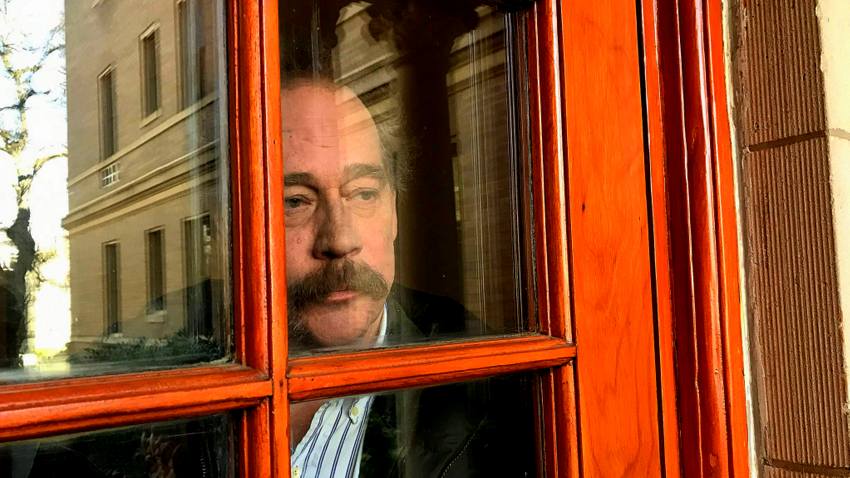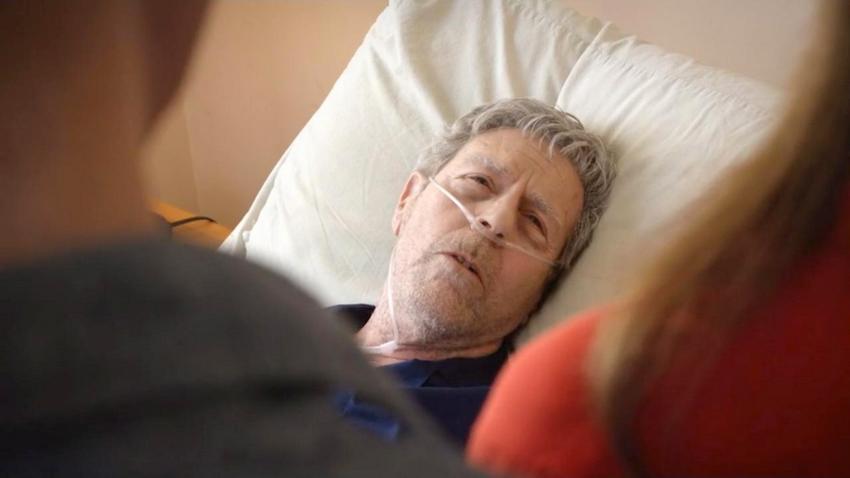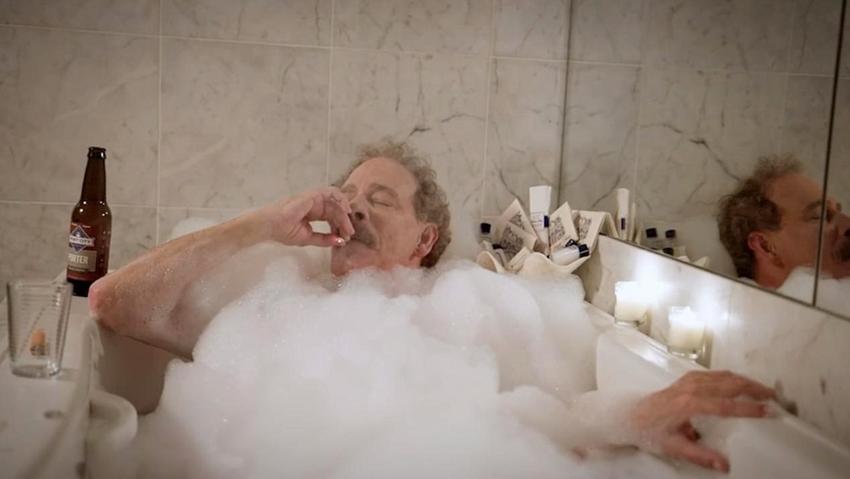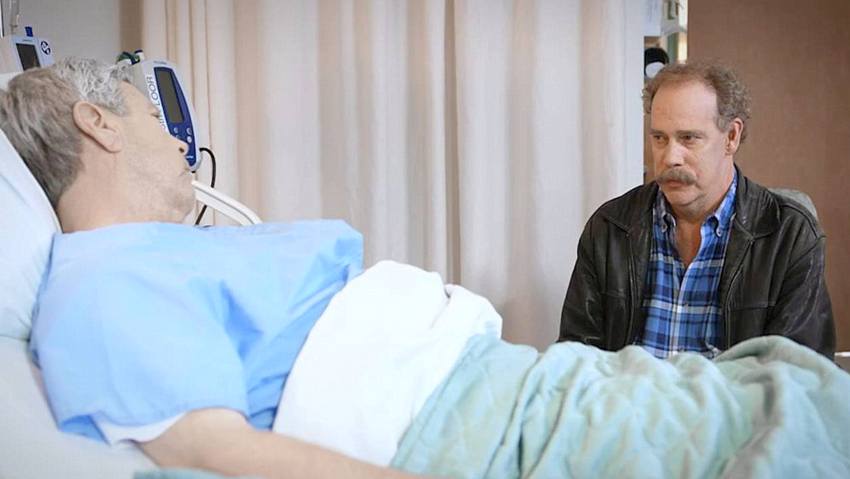
“Nothing To Do”, is the story is of two siblings who can’t stand each other but are forced to work together to care for their father, who is at the end of his life in hospice. It is done as a dramedy. There are both comic and dramatic moments between all the members of the family as they deal with caring for their father in their own way. Nothing To Do has been in 12 festivals in 2017/18 in cities all over the U.S.
Q: What is your personal experience with the story, writing, production & marketing
Mike Kravinsky: Nothing To Do is based on the personal experience of caring for my own father, Joe, at the end of his life in hospice. Caring for him was stressful, but also one of the most profound moments of my life. Although the story of the brother and sister are fiction, that aspect of the story is based on what many families go through during that difficult time. The story of father and son was loosely based on how I dealt with watching my father’s decline, and how I cared for him. This is a small production with really talented actors and crew who also all experienced caring for a loved one. They were all able to bring that experience to their roles. I think this film will resonate with anyone with an aging parent. You’ve either been though this experience, or you will.
Q: Did you start writing with a cast (You or any) in mind?
Mike Kravinsky: I didn’t have a particular cast in mind when I wrote the screenplay. But when it was completed, and I was casting, I knew exactly what I was looking for. Personality, the look, the style, the age etc.

Q: How long did you take to complete the script?
Mike Kravinsky: After a few months of frustrating false starts on different story ideas, my wife, Liza, who’s also the films composer, suggested I try writing about the experience being with my father. It was like a light switched on. I was able to finish the first draft in about a month. One year and 24 drafts later, I had the finished screenplay. Nothing To Do did well on the screenplay competition circuit, where it was a finalist at Cinequest in San Jose CA and an honorable mention at TrackingB in Los Angeles.
Q: How was it financed?
Mike Kravinsky: Nothing To do is an ultra-low budget film. It is self-financed.
Q: Is there anything about the independent filmmaking business you still struggle with?
Mike Kravinsky: In many ways, doing low budget films is great. The control of your ideas and execution, a small nimble cast and crew etc. But the downside is having to scrounge for locations, having to do many things yourself instead of having a staff. When the film is complete it’s difficult to get notice. Large budget studio films, with well known actors have name recognition. People will see a film based on that. The hardest part is to develop an audience. I think that’s why many small independent films deal with personal topics. It’s a way to find your audience. People who may have experienced the same thing as the filmmaker and can relate.
Q: How long was your pre-production?
Mike Kravinsky: We had 3 months of pre-production. That included plenty of time and for our producer to create a proper daily schedule, location search and most importantly, rehearsals. That’s a big reason our production went so smoothly. There are always daily problems during production. But if the cast know their characters and the crew can work independently to place and set up cameras, audio and lighting, all the other stuff is manageable.

Q: What was your rehearsal process and period?
Mike Kravinsky: We had 3 months of rehearsals. Not daily as most of the cast had full-time jobs. It was mostly on weekends. We did the best we could do of placing people in the positions they would be in during the shoot, lying in a bed, walking down a hall etc.. It was more than learning the lines. It was important to all of us that all the actors could really understand and identify with their character. I’m okay if an actor wants to change a line, as long as it doesn’t affect how the story unfolds. The most important thing for me is that they truly know who they are and can be that person on screen.
Q: You shot the film in days. How long were your days?
Mike Kravinsky: We shot Nothing To Do in 21 days with no more than a 12 hour day. Often it was 10 hours including lunch breaks. Because of the extensive rehearsals, we were really prepared. As a result, I didn’t have to do more than 5 takes at most. Generally, we did a scene in 3 takes.
Q: Did the tight shooting schedule make it harder or easier? How did it affect performances?
Mike Kravinsky: Everyone was really prepared. The performances were wonderful. The rehearsals made the whole process of production much easier and less stressful.
Q: How much did you go over budget? How did you manage it?
Mike Kravinsky: I did go a little over budget. I had some unforeseen location issues. It was $5000. The rest seemed to fall right into place financially.

Q: How important is marketing? Do you think a project can make any dent without it these days?
Mike Kravinsky: Marketing is an absolute necessity. Especially for a small film like ours. There are algorithms on the larger TVOD platforms that get viewers to your film, but “buzz” is essential to getting new viewers. I’m working with October Coast PR in Los Angeles. They specialize in working with small films.
Q: What was the experience like of working with such a small shooting crew?
Mike Kravinsky: I like working with small crews. It gives me more flexibility if a problem did arise. A good example is it snowed on a day we were going to shoot some exterior scenes. We were able to easily cancel that day and move to the indoor scenes. When the snow melted, we were back outside again.
Q: The film looks stunning. How did you get such a good look when shooting so fast?
Mike Kravinsky: Thank you! The answer is my DP! Travis Edwards, who’s based in Washington, DC. He was able to take my ideas and what we gave him and make it look great. Our finishing work, color grading and sound design, was done by a local house, Post Op Media in Arlington, VA.
Q: Did you look at rushes? On what format?
Mike Kravinsky: We shot in 2K. Probably the last time I’ll do that. I suspect we’ll do 4K from now on. I was able to play back every scene and watch with the actors to help them hone their characters.
Q: What were the advantages and disadvantages in the way you worked?
Mike Kravinsky: The biggest advantage is the relatively small size of the crew. As I had mentioned earlier, it was great to know everyone’s name on set. I wasn’t a stranger to them and they could come to me if they had ideas or problems. It was a great team effort. That being said, yes, it would have been nice to have a couple more people on set. Not a lot. Just enough to give some work relief to both me and our producer, Sali Dimond.
Q: What else have you got in the works?
Mike Kravinsky: At this point, I’m just writing ideas for a new film. I’m not anywhere close to a solid idea. I’m mostly using this time to get the word out about Nothing To Do
Hello Stranger by Paul Raschid set for London Games Festival & BIFFF
The film Is set for an April 10th Premiere at The Genesis Cinema in London (LGF) and BIFFF
Daydreamers Official Trailer by Timothy Linh Bui: Released by Dark Star Pictures
Daydreamers Vietnamese Vampire Thriller – May 2nd release
Afternooner by The Harrow Brothers: Funniest Movie of the Decade on VOD & DVD April
Freestyle Acquires “Afternooner” for April Release
Where We Stay by Florence Bouvy to Screen at CIFF
Where We Stay | CIFF Selected Drama About Friends Hiding Unspoken Truths
This Place by V.T. Nayani: Two Women in Love for the First Time on VOD & DVD March 25
Freestyle Acquires “This Place” for March Release
Sonoma International Film Festival Wraps with Unforgettable Films, Culinary Cinema and Packed Pop-In Events
Sonoma International Film Festival Grand Jury and Audience Award Films Announced
Livestreams with Grandmapuzzles by Emily Sheskin to Screen at CIFF
CIFF Selected Documentary About Twitch Streaming Jigsaw Puzzler









